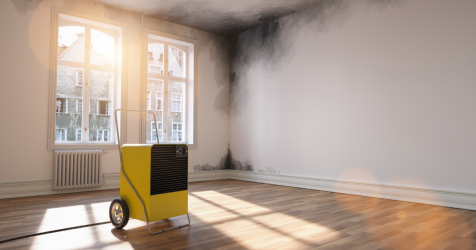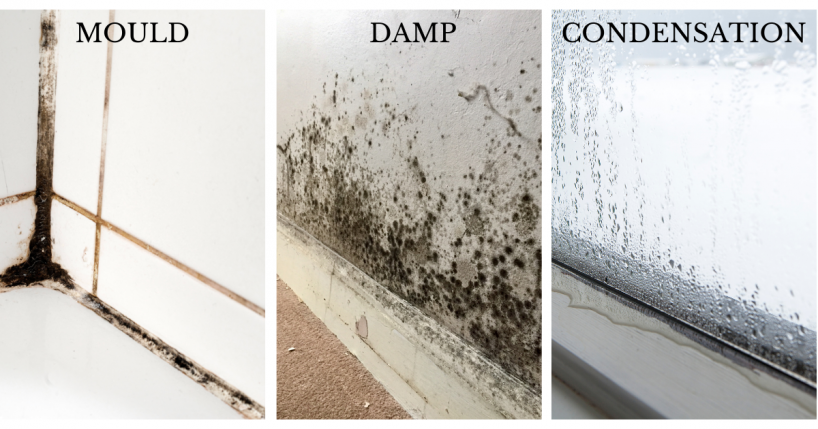Understanding Mould, Damp, and Condensation in Rental Properties: Responsibilities and Remedies
Introduction:
As autumn and winter approach, the likelihood of encountering damp, mould, and condensation in rented homes increases. It's crucial to be well-informed about these issues to ensure the well-being of tenants and understand the responsibilities of landlords. Let's explore the signs to look out for, potential consequences, and preventative measures to address these common problems effectively.
Types of Damp and Their Causes:
- Rising Damp: This occurs when water rises from the ground, affecting the lower part of a property. It can often be fixed by installing a damp-proof course, which should protect the property for about 25-30 years.
- Penetrating Damp: This can result from external factors like damaged brickwork, failing window seals, or roof issues, or internal leaks from sources such as damaged water tanks or poorly sealed baths. Damp patches on walls or ceilings can help identify the source, and a builder's inspection is advisable to address the issue and repair any damage.
- Condensation: Unlike other forms of damp, condensation is caused when warm air meets cold surfaces or when excess humidity in a property can't escape. It typically starts with dampness on windows, walls, and ceilings, eventually leading to mould growth. Common causes include inadequate ventilation, malfunctioning heating systems, tenant habits, or improper drying of clothes.
The Consequences of Neglecting Mould:
Timely removal of mould is crucial, as it can be harmful to tenants, especially those with lung-related conditions. Landlords can face fines, criminal charges, and other serious consequences if mould issues are not addressed promptly.
Responsibilities:
Landlord Responsibilities:
- Ensure the property is free of damp from the start of the tenancy.
- Provide ventilation in moisture-prone rooms, especially kitchens and bathrooms. Install extractor fans where necessary.
- Advise tenants on potential condensation-prone areas and proper ventilation.
- Regardless of the cause, landlords are responsible for removing mould and fixing the underlying issue.
Tenant Responsibilities:
- Keep surfaces free of condensation by wiping down window frames and sills.
- Ventilate rooms prone to moisture buildup, using extractor fans or opening windows in kitchens, bathrooms, and areas where laundry is drying.
- Report property issues to the landlord or managing agent.
Charging Tenants for Damp Repairs:
- For damage clearly caused by tenant negligence, such as overflowing baths or damaged plumbing fittings, landlords can retain the repair cost from the deposit or request reimbursement.
- For mildew or surface mould, it's harder to prove fault, and repair costs are typically low. Insurance policies covering accidental or malicious damage may be used for significant costs.
Preventative Measures:
Maintain Adequate Heat:
One of the fundamental aspects of preventing damp, mould, and condensation is ensuring a background heat of at least 18 degrees Celsius in all rooms, 24 hours a day. Proper heating not only keeps tenants comfortable but also helps in reducing humidity levels, a key factor in preventing condensation.
Effective Ventilation:
Ventilation goes beyond simply opening windows. While this can reduce humidity and condensation, it can also lead to heat loss. Consider using trickle vents if they are installed, and emphasise the importance of proper ventilation techniques to your tenants.
Understanding Humidity:
As room temperatures drop, humidity tends to rise, which is often the root cause of condensation issues. Educate tenants about condensation issues and their responsibility for property upkeep and why not provide anti-mould spray for tenants to address mildew early.
De-humidifiers:
Portable mains-powered dehumidifiers can be invaluable in lowering humidity levels, reducing condensation, and preventing mould and dampness. Additionally, they can help with drying clothes, lowering the likelihood that dampness will result from wet clothing on radiators.
Efficient Extractor Fans:
Install efficient continuous-running extractor fans in areas like the kitchen and bathroom. These fans are effective in removing excess moisture from the air, mitigating the risk of dampness, mould, and condensation.
Whole House Ventilation Systems:
Consider whole-house ventilation systems, such as Positive Input Ventilation (PIV) systems, which have proven to be highly effective in preventing condensation issues. These systems provide a comprehensive solution for maintaining proper air circulation and combating condensation.
Air Circulation:
Encourage tenants to allow air and heat to circulate within the property. Advise them to keep personal belongings and large furniture items away from direct contact with walls to promote proper air circulation and reduce the risk of condensation.
Regular Checks:
Conduct periodic checks every 6-12 months to detect issues early and ensure the property remains compliant with regulations. If we are acting as your managing agent, it is standard practice for us to arrange visits bi-annually and we will be looking out for any damp, mould or condensation issues.
Mould and Condensation Removal:
Regularly inspect and remove mould and condensation during the cold winter months using anti-mould sprays. Quick action is crucial to prevent mould and condensation from spreading. Avoid using bleach, as it only removes staining and doesn't eliminate mould spores. When decorating the property try to use anti-mould paint in moisture-prone areas, such as kitchens and bathrooms.
Conclusion:
Understanding and effectively addressing damp, mould, and condensation issues are vital aspects of being a responsible landlord. By taking proactive measures, educating tenants, and promptly addressing any problems that arise, you can ensure the well-being of your tenants and maintain a legally compliant rental property. If you require assistance, property management services can offer expertise and support in managing and mitigating these common challenges.
Get in touch with our lettings and property management team:
0118 334 7410






